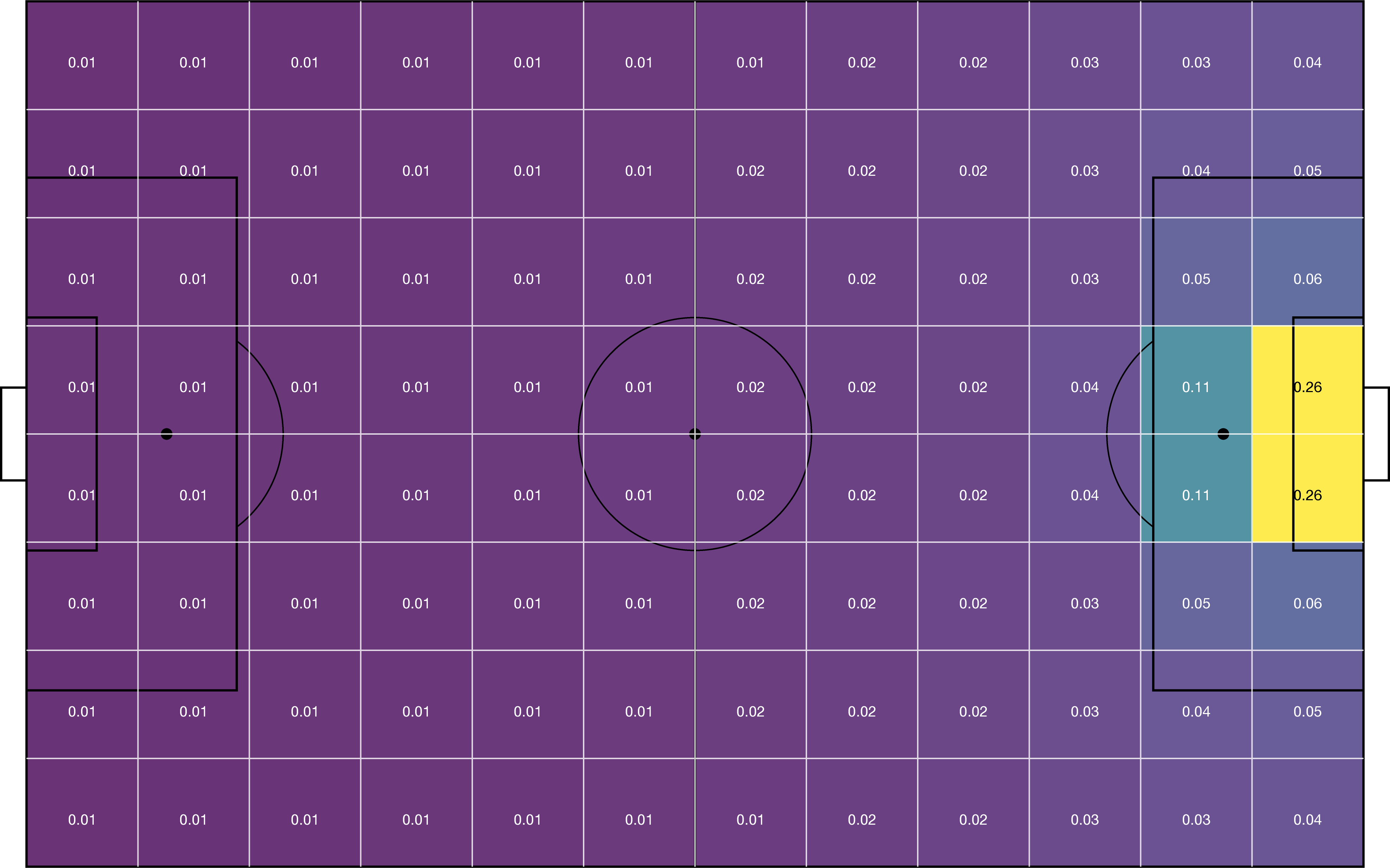Expected Threat (xT)¶
The expected threat or xT model is a possession-based model. That is, it divides matches into possessions, which are periods of the game where the same team has control of the ball. The key insights underlying xT are that (1) players perform actions with the intention to increase their team’s chance of scoring, and (2) the chance of scoring can be adequately captured by only considering the location of the ball.
Point (2) means that xT represents a game state solely by using the current location of the ball. Therefore, xT overlays a \(M \times N\) grid on the pitch in order to divide it into zones. Each zone \(z\) is then assigned a value \(xT(z)\) that reflects how threatening teams are at that location, in terms of scoring. These xT values are illustrated in the figure below.

The value of each zone can be learned with a Markov decision process. The corresponding code is shown below. For an intuitive explanation of how this works, we refer to Karun’s blog post.
import pandas as pd
from socceraction.data.statsbomb import StatsBombLoader
import socceraction.spadl as spadl
import socceraction.xthreat as xthreat
# 1. Load a set of actions to train the model on
SBL = StatsBombLoader()
df_games = SBL.games(competition_id=43, season_id=3)
dataset = [
{
**game,
'actions': spadl.statsbomb.convert_to_actions(
events=SBL.events(game['game_id']),
home_team_id=game['home_team_id']
)
}
for game in df_games.to_dict(orient='records')
]
# 2. Convert direction of play + add names
df_actions_ltr = pd.concat([
spadl.play_left_to_right(game['actions'], game['home_team_id'])
for game in dataset
])
df_actions_ltr = spadl.add_names(df_actions_ltr)
# 3. Train xT model with 16 x 12 grid
xTModel = xthreat.ExpectedThreat(l=16, w=12)
xTModel.fit(df_actions_ltr)
# 4. Rate ball-progressing actions
# xT should only be used to value actions that move the ball
# and that keep the current team in possession of the ball
df_mov_actions = xthreat.get_successful_move_actions(df_actions_ltr)
df_mov_actions["xT_value"] = xTModel.rate(df_mov_actions)
See also
This notebook gives an example of the complete pipeline to train and apply an xT model.